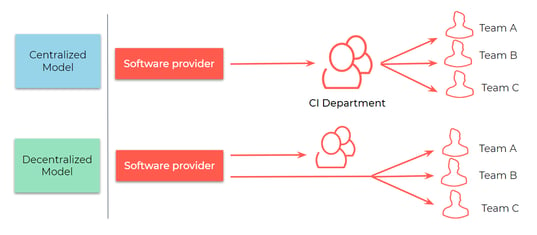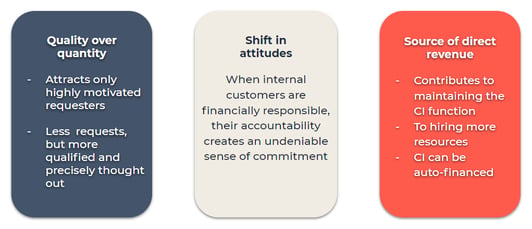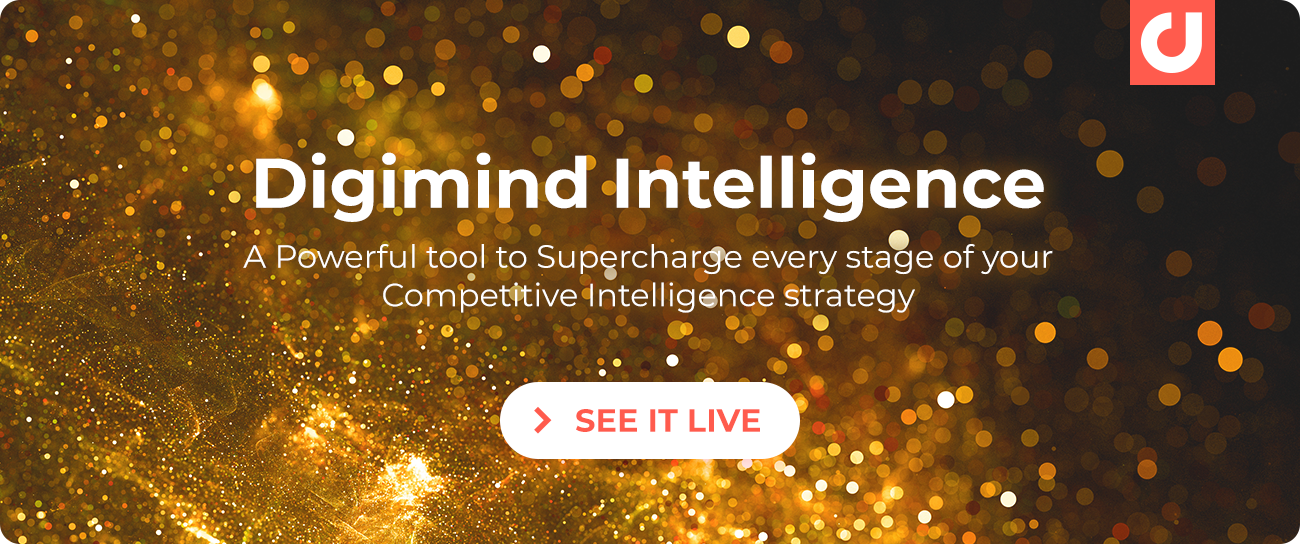How can Competitive Intelligence Departments Benefit from Internal Billing?
Internal billing in competitive intelligence is a method of charging internal customers (e.g. departments and functional units) for the CI services they use. Instead of bundling all CI costs under the CI department, an internal billing program allocates the various costs of every function (e.g. services, software, maintenance) to the business units that consume them. Internal billing moves a company away from a cost center model: a sub-unit responsible only for its costs (e.g central functions), to a profit center model: a sub-unit in control of its revenues, costs and subsequent profits.
The Emergence of Internal Billing
Thanks to the financial crisis of 2007, companies were impacted across all industries and became increasingly revenue and ROI oriented. This created a new expectation in terms of budget and staff to “do more with less”. Cost efficiency however, is a much longer process for CI to prove because the activities and ROI can only be identified long term.
Advancements in technology have decreased the value of information because the average user and non specialist is able to gather and analyse information through free search engines like Google. This democratization of information means CI units are under greater pressure than ever to produce high value content.

The image above displays the traditional centralized model and newer decentralised model. The decentralised model is different because software providers directly invoice different business units, instead of bundling all costs under the CI department. The cost model is as follows; central CI units incur fixed costs purchasing the platform and paying salaries, and costs allocated to business units include: training, specific set-up, project management, user licences and a portion of the CI professional’s salary.
The internal billing method is gaining momentum in organisations looking to alleviate costs and accurately bill the use of CI resources. The method involves CI departments charging internal clients (business units) for the projects, validations and deliverables it produces.
Fundamentally the internal billing model allows CI units to operate as an agency and invoice business units for their services, and in some extreme scenarios competitive intelligence professionals are having their entire salary paid for by other departments.
How can CI be Sold as a Service?
It can be sold in 2 different solutions. The first is a turnkey solution where business units rely entirely on CI from the set-up to analysis phase. The package includes a ready made solution from projects, validation and deliverables being conducted exclusively by the CI department. The downsides to this solution can include difficult application to technical CI topics, in the case that a CI unit might not be equipped with the required knowledge and expertise.
The second solution is an autonomous model, in this instance the CI department helps to define the set-up. Their duties includes training business users on the platform in sourcing, validation, deliverables and analysis. In this case business units are responsible for selecting business users during sourcing, validation and the distribution of deliverables.
Pros

Cons

It is also important to address the increased strain on CI professionals once internal billing is implemented. On top of their existing CI responsibilities, professionals are forced to adapt beyond their skill set in areas of marketing, sales, relationship management and administrative duties.
Keys and Tips to Success
- Because many corporate CI topics (“HR monitoring”, “labour laws”) do not affect all employees across an organisation, it is unfair to decide which business unit bares the charge. The responsibility lies with CI departments to define this in their objectives. CI topics such as competitive and client intelligence are generally budgeted for by an executive committee because they help among all departments. Internal billing should be specific and can not be used for all requests. For this a hybrid model is recommended.
- Understand that internal billing requires the art of juggling between: CI projects, pitching to new clients, nurturing existing clients, sales, marketing and administrative processes.
- Limit your number of turnkey projects running at the same time in order to avoid breaking point and use a good mix of models.
- The size of your CI department matters. One person will result in imminent failure. We recommend the minimum of 2 people in your team.
- Focus on relationship management. Be vigilant of client satisfaction rates because low levels will result in the loss of renewals, a negative impact on your revenue and your future within the organization.
To conclude
All in all, internal billing is completely dependent on the needs, challenges and size of your organisation and CI department. If you are aiming to implement this method of billing, start evangelizing the benefits of CI within your organization as soon as possible. This will make it easier to convince BUs to spend their budget on your services.
Written by Sarah Chohan
Sarah is a product marketing manager and keen social listener, curious to explore the evolving landscape of competitive intelligence.
.png?width=100&name=logo%20(1).png)



